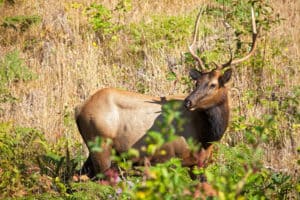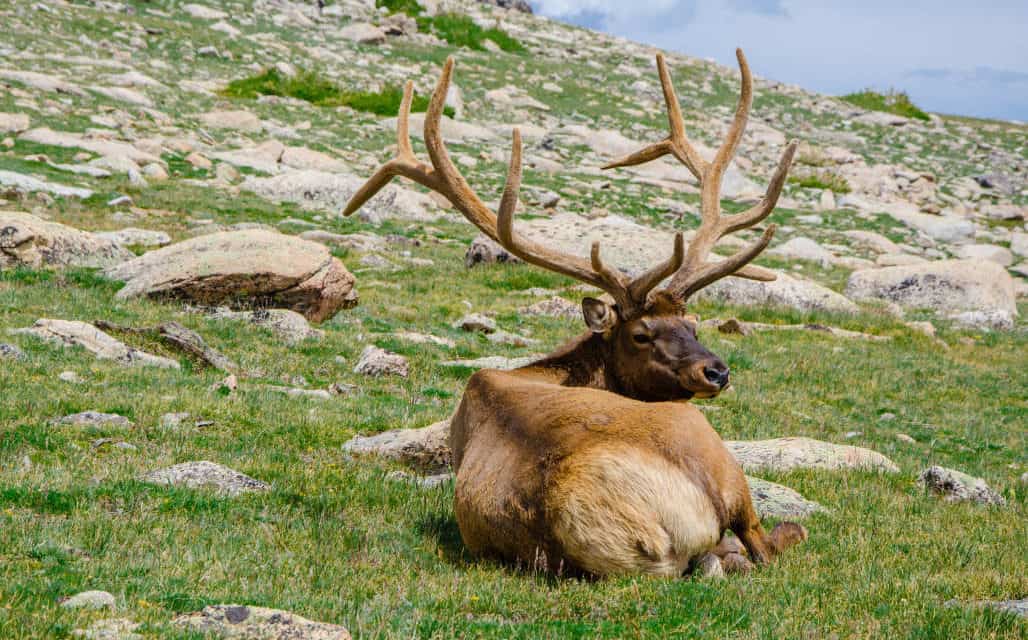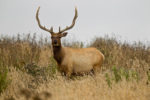By Melissa Wynn

During the days of the famous California Gold Rush, thousands of men flocked to the Sierra Nevada to seek their fortunes. Most were on the hunt for the precious yellow metal, but many market hunters were in search of elk. With the outlandish influx of people, demand for meat to feed the hungry miners and prospectors was intense. It wasn’t long before the number of elk became fewer and fewer until they were nearly extinct in the Golden State.
Today there are three species of elk throughout California: Tule, Roosevelt and Rocky Mountain. Of the three species, Tule Elk comprise the only herds endemic to California, meaning they are found no where else on the globe. Also known as dwarf elk, Tule are the smallest of California’s elk, with bulls usually weighing in around 400 pounds. A glimpse of the regal Tule is a rare and wonderful treat. All Tule Elk are decedents of a precious few discovered on Henry Miller’s farm in 1874.
A small population of Rocky Mountain Elk roam the northern part of the state. These amazing antlered mid-sized members of the elk family outweigh the Tule with bulls averaging a robust 700 pounds. Although they are in the middle weight of the three species, the Rocky Mountain Elk sports the biggest rack of antlers in the elk world.
Unlike permanent horns, antlers are shed and regrown annually. The new set will be sharpened and ready for battle each year during breeding season.
The sounds of an eerie bugle or the crash of sparring antlers might just lead you to a sighting of the illusive Rocky Mountain Elk while wandering the wilderness around Lassen, Shasta, Modoc and Siskiyou Counties in the fall.
Found primarily in the coastal regions of Northern California, the Roosevelt Elk breeds the biggest bulls and tend to have heads a bit darker in color than the other elk types.
Averaging 900 pounds, people viewing this huge member of the deer family can be truly an intimidating experience. Roosevelt Elk are perhaps the stealthiest of California’s elk species and the hunters find them quite challenging. Not only is their home range rugged and inhospitable, they also rarely bugle, making them harder to hear as well.
No matter the sub species, elk are not common in California. Although few other states can boast being home to three separate species, anyone spotting an elk in California should snap a photo and consider the experience an extremely lucky wildlife encounter.















